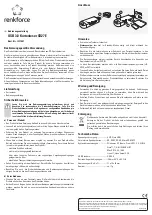
• Revision ID: Indicates the revision of the device or application; an extension of the Device
ID. The default value is
00h
; enter a value appropriate for the application.
• Subsystem Vendor ID: Further qualifies the manufacturer of the device or application.
Enter a Subsystem Vendor ID here; the default value is
10EEh
. Typically, this value is the
same as Vendor ID. Setting the value to
0000h
can cause compliance testing issues.
• Subsystem ID: Further qualifies the manufacturer of the device or application. This value is
typically the same as the Device ID; the default value depends on the lane width and link
speed selected. Setting the value to
0000h
can cause compliance testing issues.
• Class Code: The Class Code identifies the general function of a device, and is divided into
three byte-size fields:
• Base Class: Broadly identifies the type of function performed by the device.
• Sub-Class: More specifically identifies the device function.
• Interface: Defines a specific register-level programming interface, if any, allowing device-
independent software to interface with the device.
Class code encoding can be found at the
.
• Class Code Look-up Assistant: The Class Code Look-up Assistant provides the Base Class,
Sub-Class and Interface values for a selected general function of a device. This Look-up
Assistant tool only displays the three values for a selected function. You must enter the values
in Class Code for these values to be translated into device settings.
PF BARs Tab
The PF BARs tab, shown in the following figure, sets the base address register space for the
Endpoint configuration. Each BAR (0 through 5) configures the BAR Aperture Size and Control
attributes of the physical function.
Chapter 5: Design Flow Steps
PG346 (v3.3) November 16, 2022
CPM Mode for PCI Express
223















































